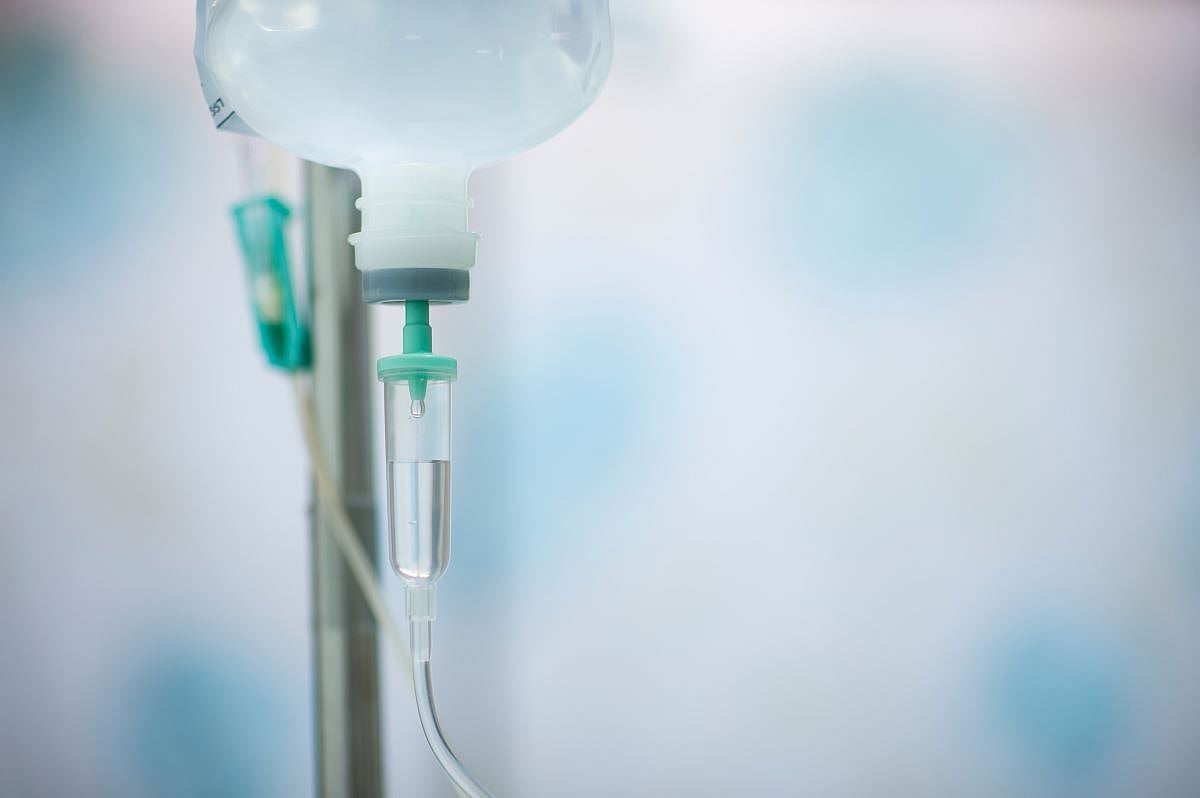Get Healthy!

- Ernie Mundell
- Posted October 10, 2024
U.S. Scrambles to Find Hospital IV Fluids After Helene Damages NC Plant
After Hurricane Helene knocked out a North Carolina production plant for a major supplier of IV fluids for U.S. hospitals, officials said the federal government is reaching out internationally to help restore supply.
The situation could get even worse: As Hurricane Milton barreled down on Florida, a second IV fluid maker's facility in Daytona Beach was in its crosshairs, the New York Times reported.
Together, the Baxter plant in Marion, N.C., and the B. Braun plant in Daytona Beach manufacture about 60% and 25%, respectively, of the nation's supply of IV fluids. These fluids are needed for the care of patients such as premature babies, people on dialysis and frail individuals who rely on IV feeding.
Hospitals across the United States are already postponing surgeries and rationing IV fluids as shortages take hold, the Times said.
Hannah Hale, 37, lives near Dallas and for eight years has required IV feeding with a concentrated dextrose solution, after Crohn's disease led to surgeries that impaired her digestive tract.
Her specialized pharmacy told her on Monday it cannot find enough of the IV solution to replenish her supply.
“They’re not supposed to just drop me like that,” she told the Times, adding that calls to 14 other pharmacies failed to find a new supplier.
“I don’t have any recourse," Hale said.
Suppliers Baxter and B. Braun have said they are doing all they can to redirect new sources from elsewhere.
Anticipating Milton, B. Braun told the Times that on Tuesday it had loaded trucks headed north full of products, to get them to a safer location.
At Baxter, staff have been working overtime to help patch together new supply chains, increasing production at plants located overseas.
On Wednesday, the U.S. Food and Drug Administration (FDA) said that it was authorizing imports of IV products from Baxter plants in Canada, Ireland, the United Kingdom and China.
Baxter had been forced to limit supplies to hospitals to 40% of usual following the damage to its plant by Helene, but the company told the Times that deliveries would have already risen to about 60% of usual by Wednesday of this week.
Baxter would not say when it expected its Marion plant to become fully operational again, but said it hoped to resume production in phases by the end of the year.
A bridge near the plant is being prioritized for repair so that trucks already loaded with Baxter product can leave and distribute supplies not damaged by the storm, the Times said.
“We will spare no resource -- human or financial -- to restart operations and help ensure patients and providers have the products they need,” José Almeida, the chief executive at Baxter, said in a statement Wednesday.
Hospitals across the nation need IV fluids to hydrate and feed patients, including those battling a life-threatening blood infection known as sepsis.
“When you’re coming in with sepsis, and specifically the septic shock, those one-liter bags are the most immediate form of treatments, and sometimes you’re getting two, if not three, of them in rapid succession,” Dr. Chris DeRienzo, chief physician executive of the American Hospital Association, explained to the Times. “There are so many special populations impacted by the shortage, what it really leads to is an impact on the whole population.”
IV fluids made by Baxter and B. Braun are also essential to the care of people in dialysis, because patients need specially formulated liquids to help clean their blood once kidneys begin to fail.
The Marion plant was a major supplier of such fluids, William Poirier of the Renal Healthcare Association told the Times.
Responding to the crisis, Xavier Becerra, secretary of the Health and Human Services Department, said in a letter to health care providers posted Wednesday that his agency was doing all it can. HHS was working with Baxter closely to help minimize disruptions in supply, he said.
“My department commits to mitigating the impact of Hurricane Helene and doing all we can to prevent further disruption as a result of Hurricane Milton,” the letter from Becerra said.
The crisis caused by Helene and Milton highlights ongoing concerns about the fragility of the supply chain of essential medical supplies in the United States. Experts have long noted that the manufacture and distribution of certain items is concentrated in only a few companies.
The COVID pandemic revealed many vulnerabilities, as officials scrambled to find essential supplies of masks, gloves and ventilators. In 2023, tornado damage to a Pfizer plant in North Carolina sparked a frenzied search for new supplies of certain generic drugs.
Most of the products involved in these shortages are low-cost, low-profit items with few incentives for new manufacturers to enter into production, experts explained.
Whether government is doing enough to build capacity is uncertain, Tom Cotter, executive director of Healthcare Ready, a nonprofit founded after Hurricane Katrina, told the Times.
“We haven’t seen a really big uptick in investment in resiliency from the government to harden our supply chains,” Cotter said. “Storms are reaching areas where they’ve never been before with greater severity. There is an increased need to widen the scope of what we think is vulnerable in our medical supply chain.”
More information
Find out more about IV fluids and what they are used for at the Cleveland Clinic.
SOURCES: Statements, Baxter International, U.S. Department of Health and Human Services and the U.S. Food and Drug Administration; The New York Times
